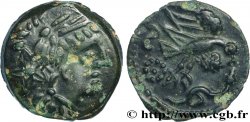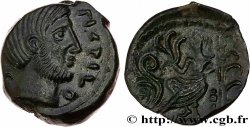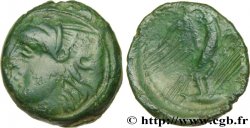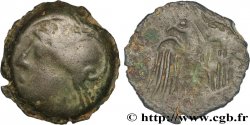v26_0647 - GALLIA - CARNUTES (Beauce area) Bronze à l’aigle et à la rouelle, tête à droite
MONNAIES 26 (2006)
Starting price : 180.00 €
Estimate : 280.00 €
Realised price : 180.00 €
Number of bids : 1
Maximum bid : 195.00 €
Starting price : 180.00 €
Estimate : 280.00 €
Realised price : 180.00 €
Number of bids : 1
Maximum bid : 195.00 €
Type : Bronze à l’aigle et à la rouelle, tête à droite
Date: c. 52 AC.
Mint name / Town : Chartres (28)
Metal : bronze
Diameter : 17,6 mm
Orientation dies : 12 h.
Weight : 3,56 g.
Rarity : R3
Coments on the condition:
Bel exemplaire sur un flan irrégulier. Droit complet et revers très légèrement décentré avec la trace du bord du coin. Belle patine vert clair émail dans les champs et plus sombre sur les reliefs
Catalogue references :
Obverse
Obverse legend : ANÉPIGRAPHE.
Obverse description : Tête stylisée à droite avec l'œil triangulaire et les mèches de cheveux parallèles, grènetis.
Reverse
Reverse legend : ANÉPIGRAPHE.
Reverse description : Aigle debout à droite, les ailes déployées, la tête tournée à droite ; “rouelle” posée entre le grènetis et le dessus de l’aile droite ; devant, ligne chevronnée.
Commentary
Cette monnaie est inhabituelle pour ce type ; au droit il y a une sorte de caducée sur la joue. Il pourrait s'agir d'un tatouage comparable à la croisette bouletée que l'on trouve à plusieurs reprises sur des monnaies d'or et d'argent. Quant au revers, la rouelle derrière la tête de l'aigle a six rayons au lieu des quatre habituels.








 Report a mistake
Report a mistake Print the page
Print the page Share my selection
Share my selection Ask a question
Ask a question Consign / sell
Consign / sell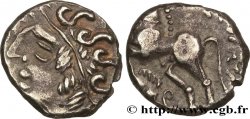
 Full data
Full data